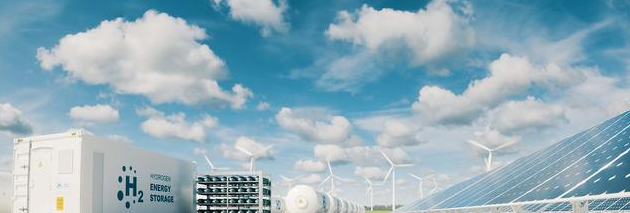
The Biden-Harris Administration today released the U.S. National Clean Hydrogen Strategy and Roadmap, a comprehensive framework for accelerating the production, processing, delivery, storage, and use of clean hydrogen—a versatile and flexible energy carrier that can be produced with low or zero carbon emissions. Achieving commercial-scale hydrogen deployment is a key component of President Biden’s Investing in America agenda, and critical to building a strong clean energy economy while enabling our long-term decarbonization objectives. Estimates indicate that America’s growing hydrogen economy has the potential to add 100,000 net new direct and indirect jobs by 2030. Developed by the U.S. Department of Energy (DOE), in partnership other federal agencies, the Strategy and Roadmap underscores the President’s whole-of-government approach to addressing the climate crisis and achieving a carbon-free grid by 2035 and a net-zero emissions economy by 2050.
“Accelerating the deployment of hydrogen is key to achieving President Biden’s vision for an affordable, secure clean energy future,” said U.S. Secretary of Energy Jennifer M. Granholm. “That’s why DOE worked alongside our federal partners to develop the U.S. National Clean Hydrogen Strategy and Roadmap that will lay the foundation for a strong and productive partnership between the public and private sectors and will guide government and industry to realize the full potential of this incredibly versatile energy resource.”
“President Biden understands that growing America’s clean hydrogen capability can spur good-paying union jobs, support local economic development, and help decarbonize industries long seen as ‘hard to decarbonize,’” said Assistant to the President and National Climate Advisor Ali Zaidi. “This roadmap will align the private and public sectors on a shared path to drive faster toward a cleaner, more secure energy future.”
Clean hydrogen offers substantial economic benefits and will help create tens of thousands of new, good-paying jobs across the country, particularly in underserved communities. According to DOE’s Pathways to Commercial Liftoff: Clean Hydrogen report, America’s growing hydrogen economy has the potential to add 100,000 net new direct and indirect jobs by 2030. By enabling the development of diverse, domestic clean energy pathways across multiple sectors of the economy, clean hydrogen will strengthen American energy independence and accelerate the American manufacturing boom that has already created over 800,000 jobs since President Biden took office.
Clean hydrogen is set to play a vital future role in reducing emissions from some of the most energy-intensive sectors of our economy, including industrial and chemical processes and heavy-duty transportation. Clean hydrogen can also support the expansion of variable renewable power by providing a means for long-duration energy storage and offers flexibility and multiple revenue streams for all types of clean power generation—including renewables, advanced nuclear, and other innovative technologies.
The Strategy and Roadmap provides a snapshot of hydrogen production, transport, storage, and use in the United States today and a vision for how clean hydrogen will contribute to national decarbonization goals across multiple sectors in the future. It examines future demand scenarios—with strategic opportunities for the domestic production of 10 million metric tonnes (MMT) of clean hydrogen annually by 2030, 20 MMT annually by 2040, and 50 MMT annually by 2050. It also complements a historic $9.5 billion investment for clean hydrogen through the President’s Bipartisan Infrastructure Law, ongoing research and development efforts across the federal government, as well as strong policy incentives—including a new production tax credit for clean hydrogen—in the historic Inflation Reduction Act.
The Strategy and Roadmap identifies three key strategies to ensure that clean hydrogen is developed and adopted as an effective decarbonization tool, including:
Targeting strategic, high-impact uses for clean hydrogen, which will ensure that clean hydrogen will be utilized in the highest benefit applications, where limited alternatives exist (such as the industrial sector, heavy-duty transportation, and long-duration energy storage to enable a clean grid);
Reducing the cost of clean hydrogen by catalyzing innovation and scale, stimulating private sector investments, and developing the clean hydrogen supply chain; and
Focusing on regional networks with large-scale clean hydrogen production and end-use in close proximity, enabling maximum benefit from infrastructure investment, driving scale, and facilitating market liftoff while leveraging place-based opportunities for equity, inclusion, and environmental justice.
To ensure the U.S. National Clean Hydrogen Strategy and Roadmap addresses the needs and incorporates input from the broadest possible array of hydrogen stakeholders, it was released in draft form for public comment in September 2022. The final version released today reflects feedback from across the Biden-Harris Administration, stakeholders in industry, academia, and the non-profit sector, as well as state, local, and Tribal governments. It also incorporates findings from DOE’s March 2023 report, Pathways to Commercial Liftoff: Clean Hydrogen. Given the rapidly evolving market, technology, and policy environment as well as community needs and engagement, the Strategy and Roadmap was designed to be a “living document” and will be updated at least every three years.